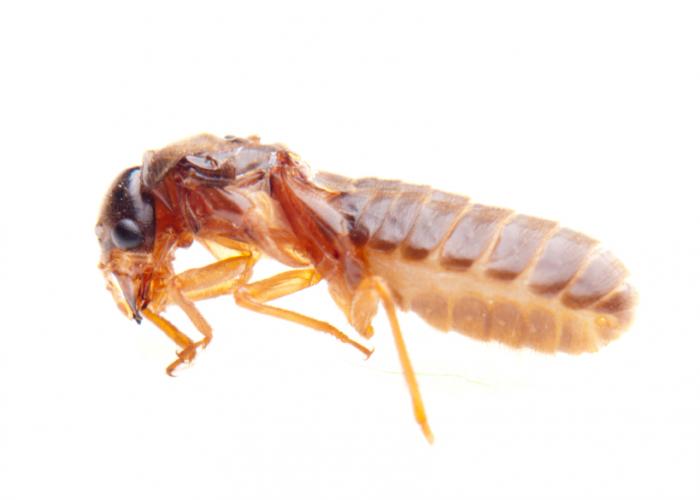Scientists have long recognized how the challenge of hunting for food has helped spur evolution of the brain and cognitive ability in the ancestors we share with other primates. Now a new study suggests foraging for well-hidden insects and slugs - especially during lean seasons when more conventional food sources were scarce - may also have played a key part.
Lead author Amanda D. Melin, assistant professor of anthropology in Arts & Sciences at Washington University in St. Louis, MO, says:
"Our work suggests that digging for insects when food was scarce may have contributed to hominid cognitive evolution and set the stage for advanced tool use."
Writing in the Journal of Human Evolution, Prof. Melin and colleagues report how they came to this conclusion after studying capuchin monkeys in Costa Rica, for 5 years.
They say their findings support the idea of a link between the need to innovate new ways to forage for insects and other well-hidden and buried foods, and the development of manual dexterity, problem solving and use of tools.
In their study, they were able to observe how the foraging patterns of the monkeys changed as the seasons influenced their food supplies. The study is thought to be the first to provide this kind of evidence directly from the wild as opposed to laboratory observations.
Prof. Melin has been studying the visual and foraging ecology of white-faced capuchins in the tropical forests of Costa Rica since 2004. She says with their small bodies and large brains they make excellent models for seeing how brain size and intelligence may have evolved.
She explains how they found the capuchin monkeys ate embedded insects all year round but this type of feeding intensified in seasons when their preferred food source - ripe fruit - became less abundant.
"Accessing hidden and well-protected insects living in tree branches and under bark is a cognitively demanding task, but provides a high-quality reward: fat and protein, which is needed to fuel big brains," she adds.
"These results suggest embedded insects are an important fallback food," she notes.
Fallback food may have influenced brain evolution as well as body evolution
Prof. Melin says a compelling modern example of seasonal fallback foraging can be seen in today's consumption of termites by chimpanzees, who use tools to extract the protein-rich insects.

Prof. Melin says an example of seasonal fallback foraging can be seen in chimpanzee's consumption of termites - chimps use tools to extract the protein-rich insects.
Scientists have already shown that fallback foods shape body evolution in primates whose fallback diets comprise mostly vegetation - for example they influence the development of the jaws, teeth and digestive system.
Now the evidence that Prof. Melin and colleagues collected suggests fallback foods also influenced brain evolution in primates whose fallback food includes insects. They suggest this influence was strongest in primates who lived in places with widely varying seasons - the wet-dry cycles of some Central and South American forests being a good example.
Not all capuchin monkeys are the same - there are different strains, with different levels of ability - and the researchers believe this helps to understand how tool use may have evolved.
The most striking difference they found in tool use was between the tufted robust capuchins of the genus sapajus and untufted gracile capuchins of the genus cebus.
The cebus capuchin monkeys have a few clever tricks for getting at their food: they bang fruit and snails against branches to get at the insides. But the sapajus show much more sophisticated means, using tools.
For instance, to crack open a palm nut, the sapaju capuchin uses one stone as an anvil and another stone to strike it with.
Prof. Malin says perhaps the cebus capuchins have always lived in the tropical rainforests, while the sapajus spread from the Atlantic rainforests into the drier, more seasonal forests:
"Primates who extract foods in the most seasonal environments are expected to experience the strongest selection in the 'sensorimotor intelligence' domain, which includes cognition related to object handling. This may explain the occurrence of tool use in some capuchin lineages, but not in others."
Genetic analysis reveals that these two genera separated in the late Miocene epoch, which occurred between 23 and 5 million years ago.
The researchers believe that the level of sensorimotor intelligence in the last common ancestor of the cebus and sapajus capuchins was more like that of today's gracile cebus monkeys and that it went on to evolve down the robust lineage when they were faced with more intense periods of fruit shortage, forcing them to rely more on fallback foods.
Diets of early humans may have included insects
Research shows that the diets of early humans may have included a range of foods that require tools to extract them, such as termites, plant roots and tubers. There are human populations today that also eat embedded insects on a seasonal basis.
Thus the authors suggest the ingenuity required to survive on a diet of elusive insects has also played a key role in human evolution, so it may well have been eating bugs that helped our brains get brainier.
Meanwhile, in March 2013 researchers from University College London in the UK came to the conclusion that in anthropoid primates - including monkeys, apes and humans - evolution has been driven by brain reorganization rather than brain size. The researchers said sometimes in evolution, a bigger brain may not be an option because it costs too much energy, and pressure to adapt may force reorganization to come into play instead.
No comments:
Post a Comment